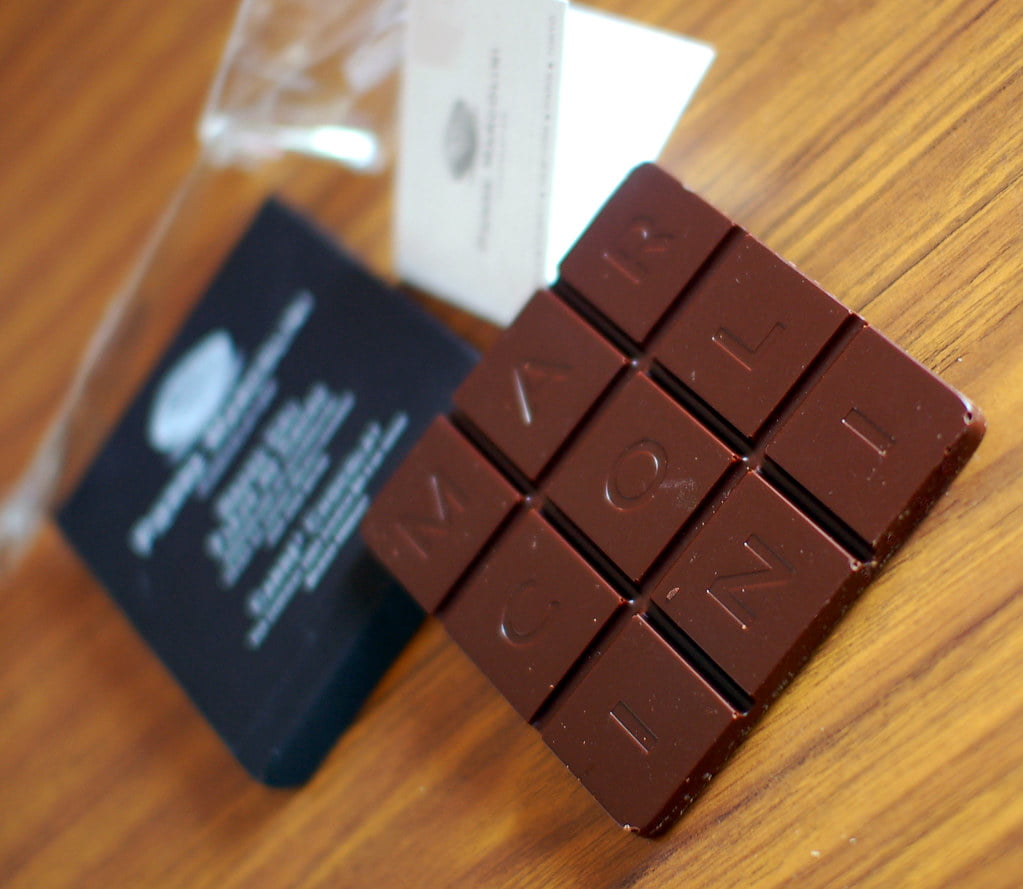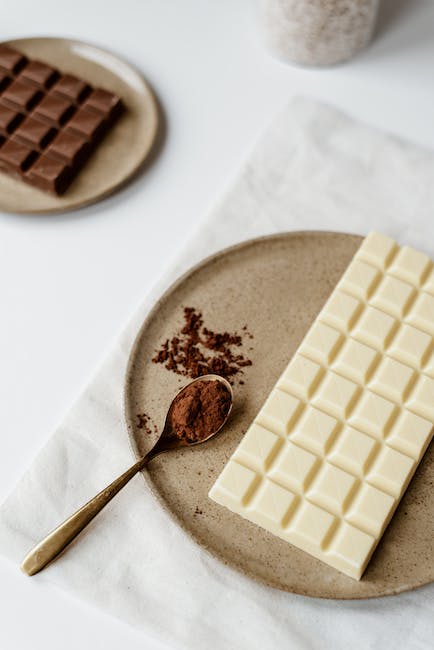The perfect balance between art and science lies at the heart of chocolate making. And when crafting the ideal texture and mouthfeel of chocolate bars, the science behind it plays a crucial role. In this article, we will delve into the intricate details of the chocolate-making process, the part of ingredients, and the techniques used to create the perfect texture and mouthfeel of chocolate bars.
Understanding the Basics: What Makes Up the Texture and Mouthfeel of Chocolate Bars
Before we dive into the science of texture and mouthfeel, it’s essential to understand the fundamental elements that make up the chocolate bar’s texture and mouthfeel. Texture and mouthfeel are the sensory characteristics of food we experience while eating. When it comes to chocolate bars, the texture and mouthfeel are determined by three factors: fat content, sugar content, and particle size.

Fat Content
The fat content in chocolate is derived from cocoa butter, a natural fat that gives chocolate its creamy and smooth texture. The fat content in chocolate is also responsible for the melting sensation we experience while eating it. The higher the fat content, the softer and creamier the texture of the chocolate.
Sugar Content
The sugar content in chocolate also plays a crucial role in its texture and mouthfeel. Sugar helps mask cocoa’s bitterness and adds a sweet flavor to the chocolate. It also affects the texture and mouthfeel of chocolate by controlling the water activity, which influences the chocolate’s firmness and hardness.
Particle Size
The particle size of the chocolate also plays a crucial role in its texture and mouthfeel. The smaller the particle size, the smoother and creamier the surface of the chocolate. Larger particle sizes, on the other hand, can create a gritty or grainy texture.

The Role of Ingredients in Crafting Texture and Mouthfeel of Chocolate Bars
Now that we understand the basics of texture and mouthfeel let’s delve into the ingredients that play a crucial role in creating chocolate bars’ perfect texture and mouthfeel.
Cocoa Beans
Cocoa beans are the foundation of chocolate and play a crucial role in determining the chocolate’s flavor and aroma. Different cocoa bean varieties have other flavor profiles influenced by soil type, climate, and fermentation. For instance, cocoa beans from Madagascar have a fruity and tangy flavor, while those from Venezuela have a nutty and earthy flavor.
Sugar
Sugar is an essential ingredient in chocolate making, and the amount used can significantly affect the texture and mouthfeel of the chocolate. In milk chocolate, sugar is added to balance the bitterness of cocoa and add sweetness to the chocolate. In dark chocolate, less sugar is used, which results in a more intense cocoa flavor and a firmer texture.
Milk Powder
Milk powder is used in milk chocolate to create a creamy texture and add a subtle dairy flavor to the chocolate. It also affects the chocolate’s melting properties; different milk powders can create different textures.
Cocoa Butter
Cocoa butter is the natural fat in chocolate that gives it its smooth and creamy texture. The amount of cocoa butter used in chocolate-making affects the chocolate’s texture and melting properties. More cocoa butter produces a smoother and creamier texture, while less produces a harder and firmer texture.
Techniques for Crafting the Perfect Texture and Mouthfeel of Chocolate Bars
Crafting the perfect texture and mouthfeel of chocolate bars requires a combination of art and science. Here are some of the techniques chocolatiers use to create the ideal texture and mouthfeel of chocolate bars.
Conching
Conching is a process in which chocolate is continuously mixed and heated to create a smooth and homogenous texture. This process can take anywhere from a few hours to several days, depending on the desired consistency and flavor of the chocolate. The conching process helps remove unwanted flavors or aromas from the chocolate while developing its taste and texture.
Tempering
Tempering is a process that involves heating and cooling chocolate to specific temperatures to create a smooth and shiny texture. This process helps to stabilize the cocoa butter, preventing it from separating from the chocolate and creating a grainy or waxy surface. Proper tempering also ensures that the chocolate has a snap when broken and melts smoothly in the mouth.
Particle Size Reduction
Particle size reduction is grinding cocoa beans and sugar to create a smooth texture. This process is critical in creating a chocolate bar with a soft and creamy mouthfeel. The particle size of the chocolate can be controlled by adjusting the grinding time and the temperature during the grinding process.
Addition of Emulsifiers
Emulsifiers such as soy lecithin can be added to chocolate to improve its texture and mouthfeel. Emulsifiers help to stabilize the cocoa butter and sugar, preventing them from separating and creating a grainy texture. Emulsifiers also enhance the flow of the chocolate, making it easier to work with during the chocolate-making process.
The Importance of Texture and Mouthfeel in Chocolate
Texture and mouthfeel are essential components of chocolate, and they play a crucial role in determining the overall quality of the chocolate. A chocolate bar with a smooth and creamy texture and a silky mouthfeel is perceived as high quality and premium, while a chocolate bar with a gritty or waxy texture is perceived as low quality.
The texture and mouthfeel of chocolate also influence our enjoyment and satisfaction while eating it. A chocolate bar melts smoothly in the mouth and has a velvety texture is more enjoyable to eat than a chocolate bar with a grainy or waxy surface.
Conclusion
In conclusion, crafting the perfect texture and mouthfeel of chocolate bars is a complex process involving art and science. The right balance of ingredients, specific techniques, and attention to detail are all critical in creating a chocolate bar with a smooth and velvety texture and a satisfying mouthfeel.
As consumers, we can appreciate the hard work and dedication of crafting the perfect chocolate bar. So the next time you savor a piece of chocolate, take a moment to understand its texture and mouthfeel and remember the science and art that went into creating it.
FAQ’s
Q: What determines the texture and mouthfeel of chocolate bars?
A: Texture and mouthfeel are determined by the chocolate’s fat content, sugar content, and particle size.
Q: What are the most critical ingredients in chocolate making?
A: The most critical ingredients in the chocolate making are cocoa beans, sugar, milk powder, and cocoa butter.
Q: What is conching, and why is it important?
A: Conching is a process in which chocolate is continuously mixed and heated to create a smooth and homogenous texture. This process helps to remove any unwanted flavors or aromas from the chocolate while also developing its taste and texture.
Q: What is tempering, and why is it important?
A: Tempering is a process that involves heating and cooling chocolate to specific temperatures to create a smooth and shiny texture. This process helps to stabilize the cocoa butter, preventing it from separating from the chocolate and creating a grainy or waxy surface.
Q: Why is the texture and mouthfeel of chocolate important?
A: The texture and mouthfeel of chocolate play a crucial role in determining the overall quality of the chocolate and influence our enjoyment and satisfaction while eating it.
